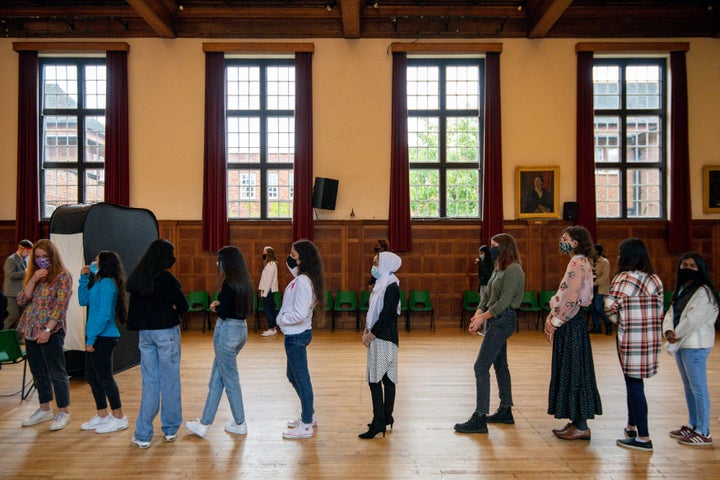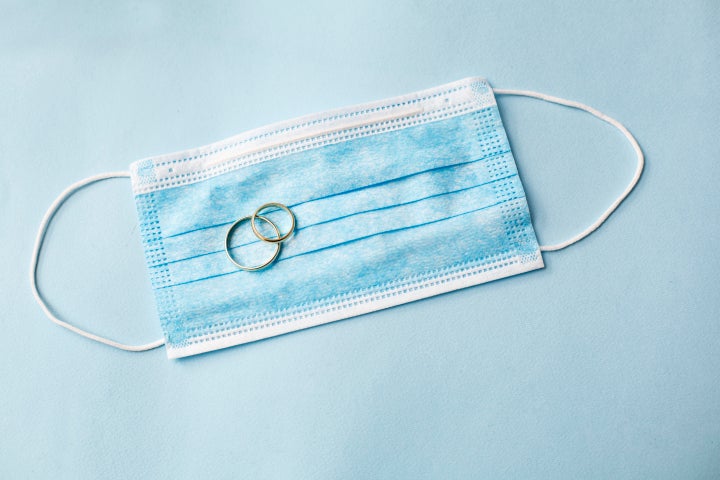Social gatherings of more than six people will be illegal in England from Monday as the government seeks to curb the rise in coronavirus cases.
Prime minister Boris Johnson will use a press conference on Wednesday to announce the change in the law after the number of daily positive Covid-19 cases in the UK rose to almost 3,000.
The legal limit on social gatherings will be reduced from 30 people to six. It will apply to gatherings indoors and outdoors – private homes, parks, pubs and restaurants.
Those who breach these rules could face a £100 fine, doubling after each further repeat offence up to £3,200.
When asked if the new rules would mean that Christmas is cancelled, health secretary Matt Hancock told LBC radio on Wednesday morning: “I hope not, but we clearly need to act. This is a really simple rule which says you cannot socialise with more than six people.”
With that said, the announcement has been met with some confusion from the public who question why people are actively being encouraged to visit pubs and restaurants, and go to work, school and university – yet having social contact reduced in very specific ways.
Here are five more things the government hasn’t explained about the new coronavirus regulations.
Why Some Gatherings Are Illegal – But Not Others

There are several exceptions to the new ban on gatherings of more than six people.
You’re still allowed to go to church, according to the Church of England.
Gatherings for work or education purposes – such as schools and universities, where hundreds or even thousands of people could be under one roof – are allowed. On Monday, thousands of pupils across England were sent home because of local coronavirus infections just a week into the new school year.
Hancock said the reason work and education were exempt was because “we need to get through this coronavirus with the minimal impact”.
But it has not been explained what measures will be implemented to mitigate risks in these “exceptional” cases.
Nor has it been explained why pubs and restaurants – some of which are still funding their own extension to the government’s “Eat Out to Help Out” scheme – are unaffected. Although you cannot meet in groups of more than six at a pub, you can still share the space with other groups (so long as you’re a certain distance apart), which in practice... might not look that different. Government insiders trailed the idea of 10pm curfews in places with high infection rates, as has been done in Bolton, but the virus is active before 10pm too.
The Dos And Don’ts In Full

Weddings, funerals and some organised team sports will also be exempt from the rules – but it is not yet known what the new rules will mean for venues such as cinemas where people are allowed in but have to social distance.
Not even the Church of England knows the full details, writing on its website on Wednesday: “We understand the new regulations will not apply to public worship or individual prayer in church buildings. We await the full details of any proposed changes to regulations to ascertain whether they could affect places of worship or other venues in other ways.”
The government is expected to publish a full list of exemptions before Monday... at some point.
The Timing
Why does the ban come into effect on Monday and not straightaway? There’s no time like the present – particularly amid a global pandemic. If new infections continue at the current rate, there could be another 12,000 cases by then.
Asked about the five-day wait on the BBC Radio 4 Today Programme, Hancock said only: “We want to give people a few days where we can absolutely communicate to everybody in England the total clarity around these rules.”
To recap, the government needs five days to explain the new rules to everyone. Hancock went on to say the rules were “really simple”.
How The Guidance Is ‘Simple’
In a Zoom meeting with the PM last week, police forces said they would like rules on social contact to be simplified.
Johnson told the public on Wednesday: “We are simplifying and strengthening the rules on social contact – making them easier to understand and for the police to enforce.”
However, there is still widespread confusion around the regulations.
It isn’t helped by Hancock’s attempts to demonstrate the simplicity of the guidance.
“The rule is that – except in schools and in workplaces – and in certain life events, like weddings and funerals – then you can’t gather with more than six people,” he told Today’s Mishal Husain.
Moments later he tried again with only marginally more success: “The rules are really simple, you know. I can say them in a sentence, which is: you can’t gather in groups of more than six, except for schools, work, those exceptional life events, er, and, um, that’s – it’s super simple.”
Why Can Six Households Now Meet Indoors?
The eagle-eyed among you may have spotted that – where previously a maximum of two households could meet indoors – the rules as explained by the PM now state simply that no more than six people can meet.
The government guidance states: “This single measure [the rule of six] replaces both the existing ban on gatherings of more than 30 and the current guidance on allowing two households to meet indoors. Now you only need to remember the rule of six.”
This means individual people from up to six households can now go to the pub together or meet in a private house – a threefold increase on the previous limit of two households.
Johnson insisted that the rules were changing partly because they were too confusing to the public and police forces. Or perhaps the problem was the perceived difficulty in getting people to prove in the event of any enforcement how many households they actually came from. (Police will now have powers to break up house parties of more than six.)
Either way, this change doesn’t appear to be driven by any science.
